While creating videos for social media, audio recording is the most important for content accessibility. Not every content creator has the budget to invest in recording equipment and studios. To compensate for that, AI brings effective voice cloning technology that lets you create your digital audio clone. Thus, this article sheds light on how to make your own AI voice to create easy and budget-friendly content for social media.
Part 1. How To Make Your Own AI Voice With Best Tool?
When thinking of voice cloning for content creation, your voice generator must be robust. Luckily, BlipCut AI Video Translator has all the qualities you might look for in a voice cloning tool. You can benefit from the multilingual support to generate a voice clone in diverse languages. This cloned voice can be used to dub your uploaded videos for translation purposes.
For easy navigation and future usage, all cloned voices can be stored and managed in a designated folder. For video translation, many tools use new AI voices for dubbing, but BlipCut AI Video Translator’s Instant Voice Cloning ability uses the original audio for translation. If you want to learn how to make your own AI voice using BlipCut AI Video Translator, follow the guide below:
-
Step 1. Access the New Video Translation Project to Begin
To initiate, open BlipCut AI Video Translator on the web and use the main interface to Create a New project.

-
Step 2. Input the Desired Languages To Instant Clone Video
Using the next interface, click Upload File(s) to select and upload a video from the device. When the uploaded video appears on the screen, expand the Source Language menu to select the original video language. To translate the video, pick the targeted language from the Translate To menu. Choose the Instant Voice Clone option to translate the video using the original audio and click Translate to execute the process.

-
Step 3. Export the Video If the Results are Satisfactory
When the translated video appears on the screen, view the results in the preview window on the right. If the results are satisfactory, navigate to the bottom right to Export results.

-
Step 4. Download the Files to End the Process
Lastly, enter the Download File window and check the Download Video box to save the MP4 video file. To save the audio in MP3 format, mark the Download Audio box and press the Download button to export the output.

Part 2. 6 Other Tools To Create Your Own AI Voice
Now that we have explored BlipCut AI Video Translator as a robust voice cloning tool, let's look into similar AI platforms offering top voice cloning facilities:
1. Resemble AI
This platform allows you to create your own AI voice through its cutting-edge speech-generation features. It gives you the choice to create audio from a textual script, an uploaded, or an instantly recorded audio. While providing an audio sample, you can enter the audio input settings and enable autogain control, echo cancellation, and noise suppression.
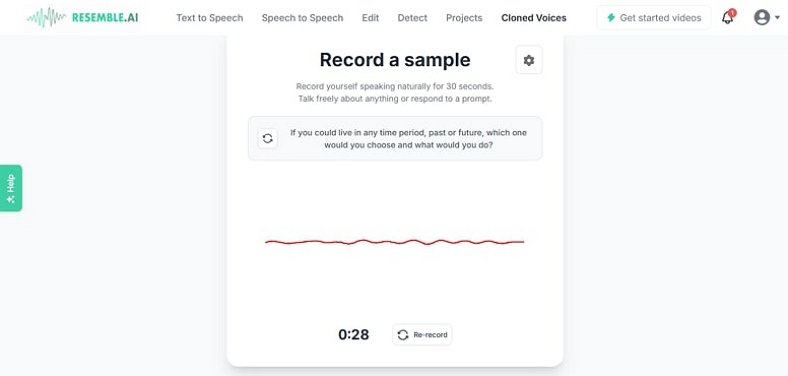
Pros
![]()
-
This tool requires just 10 seconds of your audio sample to clone voice.
-
Adjust the audio temperature and speaking pace to make the cloned voice sound natural.
Con
![]()
-
Resemble AI does not allow video uploads for a voiceover.
2. ElevenLabs
ElevenLabs is the right place to be if you are looking for a tool for amateurs and professionals. It offers an Instant Voice Cloning feature that allows you to make your own AI voice using a short audio sample. As for professionals, Professional Voice Cloning is a useful facility that enables experts to generate a voice clone from a 30-minute audio sample.
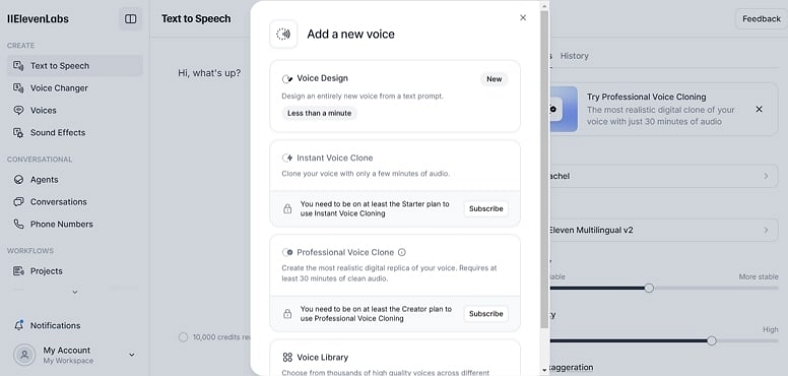
Pros
![]()
-
ElevenLabs supports 32 languages for generating a multilingual voice clone.
-
Fix the stability, similarity, and style exaggeration scores to obtain audio that matches the script.
Con
![]()
-
The voice cloning functionality is limited to the paid plan for this tool.
3. Kits AI
Kits AI understands voice cloning and offers various functionalities derived from it. After you have provided an audio sample, you can create your own AI voice Professional Voice Cloning for accurate results. The Voice Designer allows you to select the voice traits and styles to design the desired audio. Moreover, users can blend two cloned voices and create one custom voice.
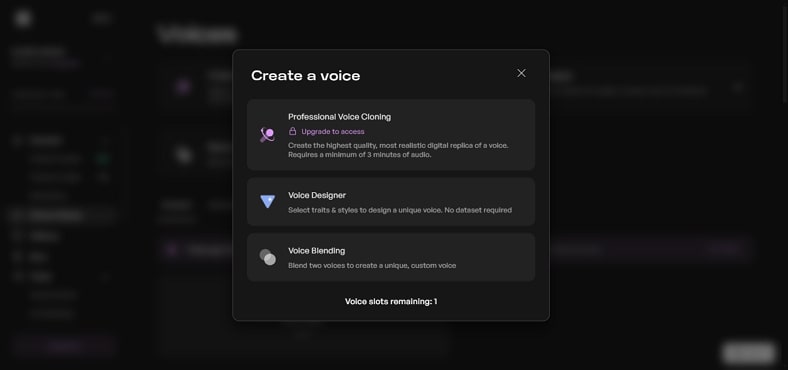
Pros
![]()
-
Users can utilize this tool to generate songs in their own voice.
-
After generating a song, you can separate its stems to create a remix.
Con
![]()
-
The voice cloning procedure is really complex and could confuse a beginner.
4. VEED
Using VEED, you can make your own AI voice and use it to dub an uploaded video. After the dubbing is done, you can enhance the audio by selecting a custom speed for it. The Clean Audio feature lets you remove the background noise and create a clean voiceover. In addition, users can use the Remove Silences feature to cut the dead air and awkward pauses from the audio.
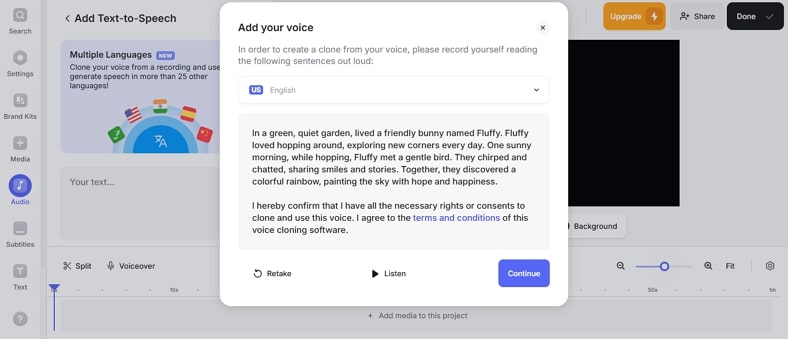
Pros
![]()
-
Besides uploading a video, you can record an instant clip or generate one using AI.
-
This platform supports over 25 languages to generate multilingual voice clones.
Con
![]()
-
The voice cloning application is slow and takes up to 10 minutes for audio generation.
5. Speechify
Speechify offers various utilities to ensure that your cloned voice is accurate and realistic. As you create your own AI voice using Speechify, preserve the original accents, nuances, and styles. To generate a precise clone, enter the video language or select the autodetect option and let AI recognize the language. Additionally, it requires 20 seconds of audio data to produce audio that matches your voice.
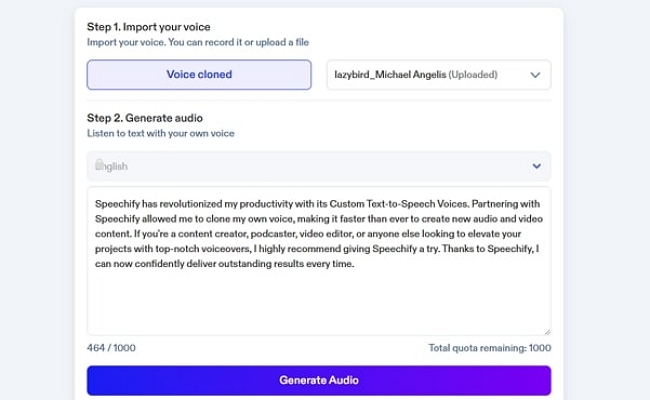
Pros
![]()
-
Leverage the multilingual support and clone your voice in over 40 languages.
-
This platform uses its text-to-speech feature to generate captivating voiceovers.
Con
![]()
-
You can only enter a 1000-character textual script to generate a cloned voice.
6. PlayHT
If you are looking for a voice cloning tool with audio adjustment options, PlayHT is just the right platform for you. After you have make your own AI voice, enhance its quality through its audio stability option. When looking for audio that is completely similar to the data sample, adjust the similarity and intensity scores as desired.
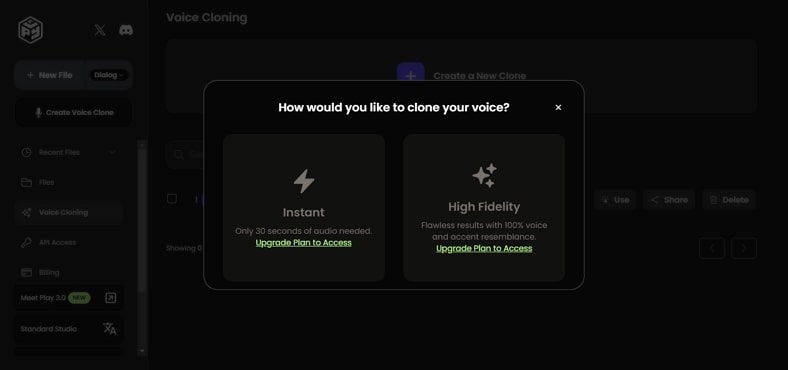
Pros
![]()
-
If the voice cloning sounds over the top, you can use the built-in AI voices to generate a quick voiceover.
-
Use your custom voice to dub a video into more than 30 languages.
Con
![]()
-
You cannot upload and dub a video with the cloned voice.
Part 3. FAQs on Making Your Own AI Voice
-
Q1. Do you need equipment for recording your AI voice?
A1: To record a personal AI voice, all you need is a voice cloning tool and a built-in device microphone.
-
Q2. Which service provides the best AI voice cloning facility?
A2: Among all the voice cloning facilities, BlipCut AI Video Translator is the most reliable option. With its accurate audio-replicating technology and multilingual support, it serves as the most versatile tool.
-
Q3. Can you create an AI voice that can be used in translating video content?
A3: BlipCut AI Video Translator offers a video translating feature that allows you to use the original video speakers for translation. It uses its Instant Voice Cloning feature to generate seamless video translation with dedicated voice cloning.
-
Q4. How to make your own AI voice free?
A4: To make an AI voice for free, use the free trial version of Resemble AI or VEED. Also, you can utilize the voice cloning features of BlipCut AI Video Translator for quick and accurate results.
Conclusion
In summary, this article was a comprehensive guide on how to make your own AI voice using the 7 most effective ways. After exploring each platform in detail, we concluded that BlipCut AI Video Translator is the most reliable and accurate option. With multilingual support and quick audio generation ability, this tool stands out in terms of voice cloning.
Leave a Comment
Create your review for BlipCut articles
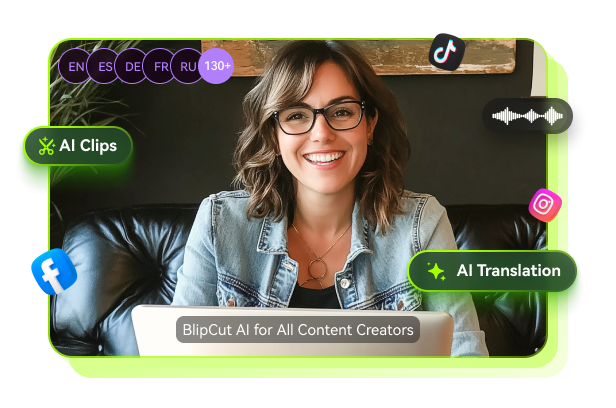




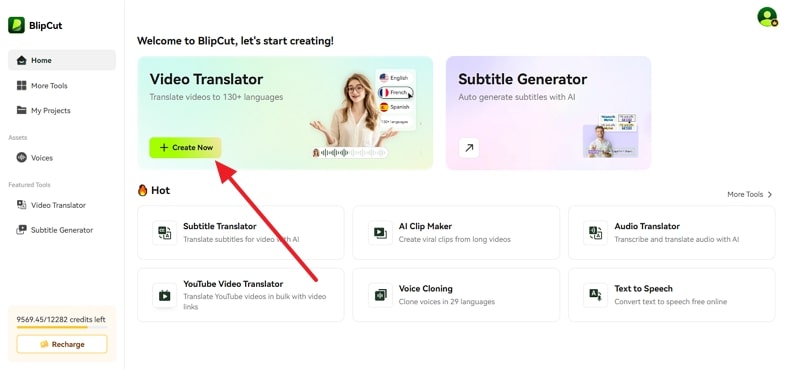
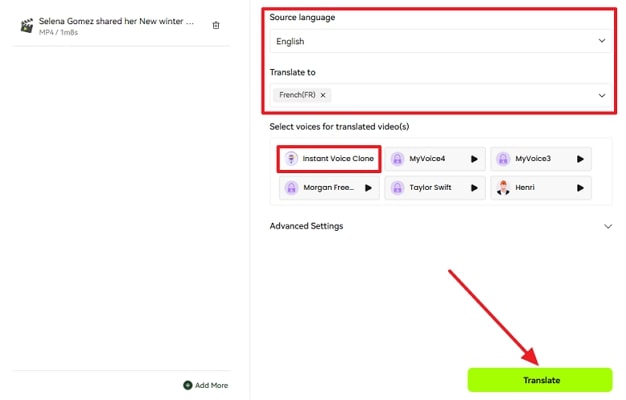
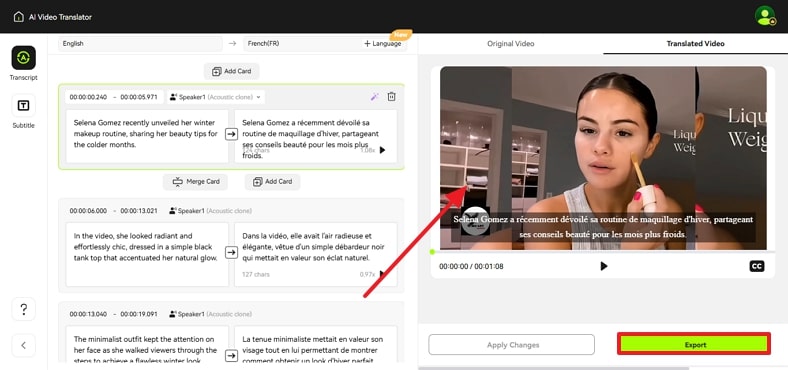
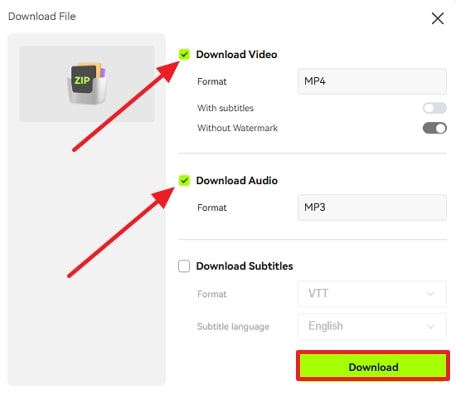

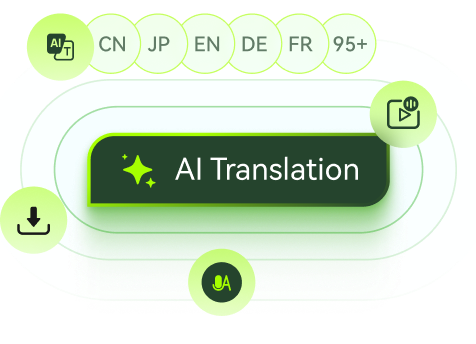

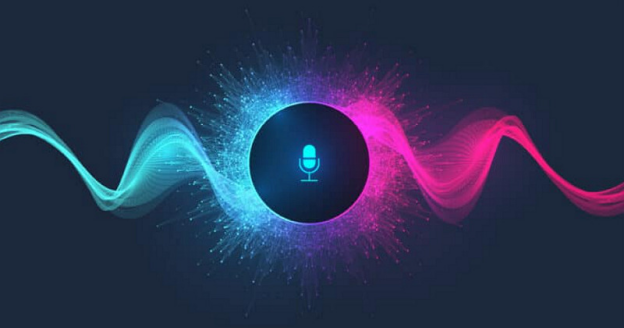

Blake Keeley
Editor-in-Chief at BlipCut with over three years of experience, focused on new trends and AI features to keep content fresh and engaging.
(Click to rate this post)